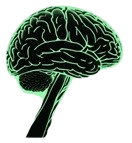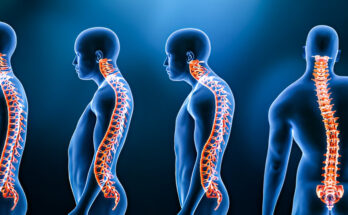Table of Contents
- Introduction:
- What is Functional Fitness?
- Why Functional Fitness is Gaining Popularity
- Core Principles of Functional Fitness
- Key Benefits of Functional Fitness
- Examples of Functional Fitness Exercises
- Tools and Equipment for Functional Fitness
- Functional Fitness in Modern Gyms and Studios
- How to Get Started with Functional Fitness
- Modern Trends in Functional Fitness
- Conclusion:
- Build Strength for Life
Introduction: What is Functional Fitness?
In the world of fitness, trends come and go, but one movement that has stood the test of time is functional fitness. Unlike traditional gym workouts that focus solely on aesthetics or isolated muscle groups, functional fitness emphasizes movements that mimic real-life activities. It aims to improve strength, flexibility, balance, and coordination, helping individuals perform daily tasks with ease and reducing the risk of injury.
This blog explores the rise of functional fitness, its benefits, and how you can incorporate it into your workout routine to enhance everyday strength and overall well-being.
Why Functional Fitness is Gaining Popularity
Functional fitness has become a buzzword in the fitness industry, and for good reason. Modern lifestyles often involve prolonged sitting, repetitive movements, and limited physical activity, leading to poor posture, muscle imbalances, and reduced mobility. Functional fitness addresses these issues by:
Improving Overall Functionality: Enhancing the body’s ability to perform everyday tasks like lifting, bending, and climbing stairs.
Focusing on Holistic Movement: Training multiple muscle groups simultaneously, rather than isolating them.
Reducing Risk of Injury: Building strength in stabilizing muscles to protect joints and improve balance.
Adapting to All Fitness Levels: Exercises can be modified to suit beginners, athletes, and seniors alike.
Promoting Longevity: Supporting long-term mobility and independence.
Core Principles of Functional Fitness
To understand functional fitness, it’s essential to recognize its foundational principles:
1. Multi-Planar Movement
Everyday activities involve moving in multiple directions—forward, backward, side-to-side, and rotationally. Functional exercises incorporate these planes of motion to mimic real-life movements.
2. Compound Movements
Functional fitness focuses on exercises that engage multiple muscle groups at once, such as squats, deadlifts, and lunges. This approach builds strength, coordination, and endurance.
3. Core Stability
A strong core is essential for maintaining balance, posture, and overall strength. Functional exercises often target the core to improve stability and prevent injuries.
4. Progressive Overload
Gradually increasing the intensity of exercises ensures continuous improvement without risking injury.
Key Benefits of Functional Fitness
1. Enhanced Daily Performance
Functional fitness trains your body to move efficiently, making daily tasks like carrying groceries, gardening, or playing with your kids easier.
2. Injury Prevention
By strengthening stabilizing muscles and improving balance, functional training reduces the likelihood of strains, sprains, and falls.
3. Improved Posture and Mobility
Functional exercises counteract the negative effects of prolonged sitting and poor posture, increasing flexibility and joint mobility.
4. Time Efficiency
With its focus on compound movements, functional fitness workouts are highly efficient, delivering maximum results in less time.
5. Customizable for All Ages
From young athletes to seniors, functional fitness can be adapted to meet individual needs and abilities.
Examples of Functional Fitness Exercises
1. Bodyweight Movements
Squats: Mimic the motion of sitting and standing.
Lunges: Improve balance and leg strength.
Push-ups: Build upper body and core strength.
2. Dynamic Movements
Kettlebell Swings: Enhance power and coordination.
Medicine Ball Throws: Develop explosive strength and core stability.
3. Balance and Stability Work
Single-Leg Deadlifts: Train balance and posterior chain strength.
Plank Variations: Build a strong and stable core.
4. Rotational Movements
Russian Twists: Strengthen oblique muscles.
Cable Woodchops: Mimic twisting motions used in daily activities.
5. Integrated Full-Body Movements
Burpees: Combine strength, cardio, and coordination.
Farmer’s Carry: Improve grip strength and core stability.
Tools and Equipment for Functional Fitness
While functional fitness often uses bodyweight exercises, incorporating tools can add variety and challenge:
Kettlebells: Ideal for dynamic and compound movements.
Resistance Bands: Portable and versatile for strength training.
Medicine Balls: Great for explosive exercises.
Balance Boards: Improve stability and coordination.
TRX Suspension Trainer: Leverage body weight for versatile workouts.
Functional Fitness in Modern Gyms and Studios
The rise of functional fitness has led to a surge in gyms and studios offering specialized classes, such as:
CrossFit: Combines functional movements with high-intensity training.
Boot Camps: Focus on group workouts that mix strength and cardio.
Pilates and Yoga: Enhance core strength, flexibility, and balance.
Many gyms now feature functional training zones equipped with ropes, sleds, and kettlebells to support dynamic workouts.
How to Get Started with Functional Fitness
1. Assess Your Needs
Identify your fitness goals and any limitations, such as injuries or mobility issues.
2. Start with Basics
Focus on mastering bodyweight exercises and proper form before adding weights or advanced movements.
3. Incorporate Functional Fitness into Your Routine
Dedicate 2-3 days a week to functional workouts, complementing other forms of exercise like cardio or strength training.
4. Seek Professional Guidance
Consider working with a personal trainer or attending a functional fitness class to learn proper techniques.
5. Track Your Progress
Monitor improvements in strength, balance, and mobility to stay motivated.
Modern Trends in Functional Fitness
1. Wearable Technology
Track performance metrics like heart rate, calorie burn, and movement efficiency with devices like smartwatches and fitness trackers.
2. Virtual Training
Access online functional fitness programs and virtual coaching for convenient at-home workouts.
3. Hybrid Workouts
Combine functional training with elements of yoga, Pilates, or HIIT for a well-rounded approach.
4. Corporate Wellness Programs
Companies are incorporating functional fitness into wellness initiatives to improve employee health and productivity.
Conclusion: Build Strength for Life
Functional fitness is more than a workout trend; it’s a sustainable approach to health and well-being. By focusing on movements that improve real-life functionality, you can enhance strength, mobility, and balance while reducing the risk of injury. Whether you’re an athlete, a busy professional, or someone looking to improve daily life, functional fitness offers a path to long-term health and vitality.




